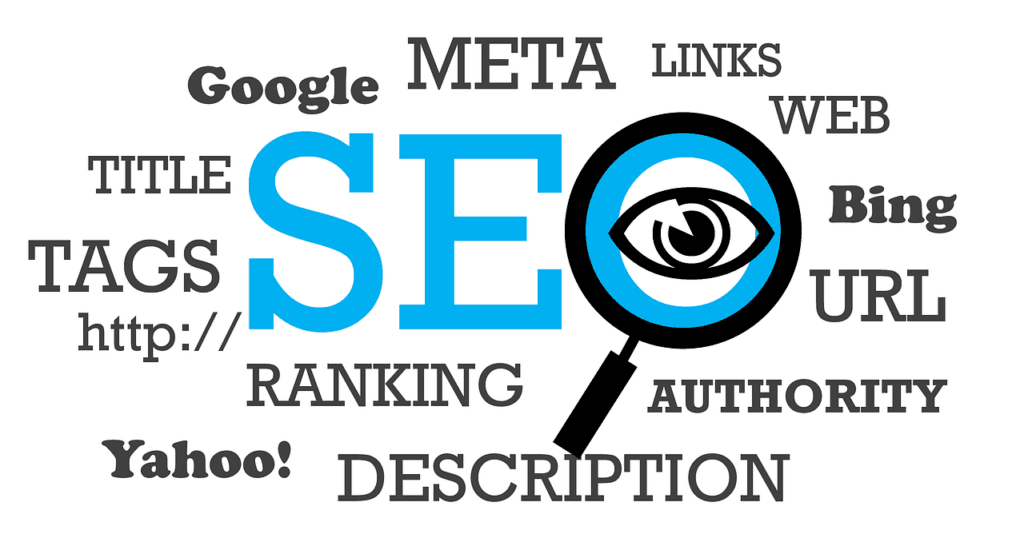This Article has been revised, edited and added to, by Poulomi Chakraborty.
- Understanding SEO for Telehealth
- On-Page SEO vs. Off-Page SEO: A Comparative Analysis
- Local SEO for Telehealth Services
- Content Marketing for Telehealth SEO
- Analytics and Monitoring
- Voice Search Optimization for Telehealth
- Leveraging AI and Machine Learning in SEO
- Case Studies and Examples of Successful Telehealth SEO
- Schema Markup and Structured Data
- Enhancing User Experience (UX) for SEO
- Leveraging Content for Link Building
- Analytics and Continuous Improvement
- Conclusion
In the ever-evolving healthcare landscape, telehealth services have emerged as a vital component, offering patients the convenience of accessing medical care remotely. As more healthcare providers adopt telehealth, standing out in the crowded digital space becomes increasingly important. This is where SEO (Search Engine Optimization) for telehealth services plays a crucial role. By optimizing your telehealth website for search engines, you can attract more patients, improve your online visibility, and establish your practice as a trusted provider of remote healthcare. This guide will walk you through the essential strategies for effectively implementing SEO for telehealth services.
Understanding SEO for Telehealth

SEO for telehealth services involves optimizing your website to rank higher in search engine results, making it easier for potential patients to find you.
Unlike traditional SEO, telehealth SEO has unique challenges and opportunities due to the nature of remote healthcare. Let’s explore the key elements that differentiate telehealth SEO from other forms of SEO and how you can leverage them to your advantage.
The Importance of Keyword Research
Keyword research is the foundation of any successful SEO strategy. For telehealth services, it’s crucial to identify the specific terms and phrases that potential patients use when searching for remote healthcare.
This includes not only general healthcare terms but also specific keywords related to telehealth services. Tools like Google Keyword Planner, Ahrefs, and SEMrush can help you discover relevant keywords and understand their search volume and competition.
When conducting keyword research for telehealth, consider the various types of services you offer, such as virtual consultations, online therapy sessions, or remote monitoring. Include both broad and long-tail keywords to capture a wide range of search queries.
For example, while “telehealth services” is a broad keyword, “online doctor consultation for flu” is a long-tail keyword that targets a specific need.
On-Page SEO for Telehealth Websites
On-page SEO involves optimizing individual pages on your website to rank higher in search engine results. For telehealth websites, this means ensuring that your content, structure, and technical elements are all optimized to provide the best user experience and meet search engine guidelines.
Content Optimization
High-quality, informative content is essential for telehealth SEO. Your website should provide detailed information about the telehealth services you offer, including how they work, the benefits, and what patients can expect during a virtual visit.
Use the keywords identified during your research naturally within your content, ensuring it reads smoothly and provides value to your audience.
In addition to service pages, consider creating a blog where you can publish articles on relevant healthcare topics, telehealth trends, and patient success stories. This not only helps with SEO but also establishes your practice as an authority in telehealth.
Technical SEO
Technical SEO refers to optimizing the technical aspects of your website to improve its performance and make it easier for search engines to crawl and index your pages. Key elements of technical SEO for telehealth websites include ensuring your site is mobile-friendly, improving page load speeds, and using secure HTTPS connections.
A mobile-friendly design is crucial for telehealth services, as many patients will access your site from their smartphones or tablets. Ensure that your site’s layout adapts to different screen sizes and that all features, such as appointment booking forms and video consultations, work seamlessly on mobile devices.
Off-Page SEO for Telehealth
Off-page SEO involves actions taken outside of your website to improve its authority and search engine rankings. For telehealth services, building a strong online presence through backlinks, social media engagement, and positive reviews is essential.
Building Backlinks
Backlinks are links from other websites to your site and are a significant factor in determining your site’s authority and ranking. Focus on obtaining high-quality backlinks from reputable healthcare websites, medical directories, and authoritative blogs. Guest blogging on related websites and participating in online forums can also help you earn valuable backlinks.
Social Media Engagement
Social media platforms are powerful tools for promoting your telehealth services and driving traffic to your website. Regularly share informative content, engage with your audience, and participate in relevant conversations to increase your visibility and build a loyal following. Positive interactions on social media can also lead to increased brand awareness and more patient inquiries.
Online Reviews
Positive reviews on platforms like Google My Business, Healthgrades, and Yelp can significantly impact your online reputation and SEO. Encourage satisfied patients to leave reviews and respond to them promptly, addressing any concerns professionally. A strong online reputation builds trust with potential patients and can improve your local search rankings.
On-Page SEO vs. Off-Page SEO: A Comparative Analysis

Understanding the differences between on-page and off-page SEO is crucial for effectively optimizing your telehealth website. Both strategies play complementary roles in improving your search engine rankings and driving organic traffic, but they focus on different aspects of your online presence.
On-Page SEO
On-page SEO focuses on optimizing the elements within your website that directly impact search engine rankings. This includes content creation, keyword usage, meta tags, URL structure, and technical elements like page speed and mobile-friendliness.
Content optimization is a core component of on-page SEO. For telehealth services, this means creating detailed, informative content that addresses the needs and concerns of your target audience. Incorporating relevant keywords naturally within your content helps search engines understand the context and relevance of your pages.
Meta tags, including title tags and meta descriptions, are also important for on-page SEO. These tags provide brief summaries of your pages and appear in search engine results. Optimizing them with keywords and compelling descriptions can improve your click-through rates.
Technical SEO ensures that your website is easy to navigate and performs well on different devices. This involves optimizing page load speeds, ensuring mobile compatibility, and using secure HTTPS connections. A technically sound website provides a better user experience and is more likely to rank higher in search results.
Off-Page SEO
Off-page SEO focuses on actions taken outside of your website to improve its authority and search engine rankings. This includes building backlinks, engaging on social media, and managing online reviews.
Backlinks from reputable websites signal to search engines that your site is a trusted source of information. Earning high-quality backlinks involves creating valuable content that others want to link to, guest blogging, and participating in online forums and discussions.
Social media engagement helps increase your visibility and drive traffic to your website. By sharing informative content, engaging with your audience, and participating in relevant conversations, you can build a loyal following and enhance your online presence.
Online reviews play a significant role in off-page SEO. Positive reviews on platforms like Google My Business and Healthgrades not only improve your reputation but also impact your local search rankings. Encourage satisfied patients to leave reviews and respond to them promptly to build trust and credibility.
Local SEO for Telehealth Services

Local SEO is crucial for telehealth services because it ensures that your practice appears in search results for potential patients in your area. Even though telehealth allows you to reach patients beyond your immediate geographic location, local SEO helps build a strong foundation in your community and makes it easier for nearby patients to find you.
Optimizing Your Google My Business Listing
Google My Business (GMB) is a powerful tool for local SEO. Start by claiming and verifying your GMB listing if you haven’t already. Ensure all information is accurate and complete, including your practice name, address, phone number, website, and business hours.
Add high-quality photos of your practice, as well as images that depict the telehealth experience, such as screenshots of virtual consultations or your telehealth platform.
Encourage patients to leave reviews on your GMB listing. Positive reviews enhance your reputation and can improve your rankings in local search results. Respond to reviews promptly, thanking patients for their feedback and addressing any concerns professionally.
Incorporating Local Keywords
Using local keywords throughout your website is essential for local SEO. These are phrases that include your location, such as “telehealth services in [city]” or “online doctor consultations in [region].” Incorporate these keywords naturally into your content, including service pages, blog posts, and meta descriptions.
Create location-specific pages if your practice serves multiple areas. Each page should have unique content tailored to the needs and queries of patients in that location. This helps search engines understand the geographic areas you serve and improves your visibility in local search results.
Building Local Citations
Local citations are mentions of your practice’s name, address, and phone number (NAP) on other websites, such as local directories, medical directories, and review sites. Consistency is key, so make sure your NAP information is the same across all listings. Discrepancies can confuse search engines and negatively impact your local search rankings.
Ensure your practice is listed on local business directories and telehealth-specific directories. This not only provides valuable backlinks but also helps potential patients find your practice when searching for local telehealth services.
Content Marketing for Telehealth SEO

Content marketing is a powerful strategy for telehealth SEO. By creating and sharing valuable content, you can attract and engage potential patients, establish your authority in the field, and improve your search engine rankings.
Developing a Content Strategy
A well-planned content strategy is essential for success. Start by identifying your target audience and their needs. Understand what questions they have, what information they are seeking, and what challenges they face regarding telehealth. This will help you create content that resonates with them and provides real value.
Create a content calendar to plan and organize your content efforts. Include a mix of blog posts, videos, patient testimonials, and other formats to keep your audience engaged. Aim to publish content regularly, but prioritize quality over quantity. Each piece of content should be well-researched, informative, and optimized for search engines.
Creating Engaging Blog Posts
Blogging is a cornerstone of content marketing and an excellent way to improve your SEO. Write blog posts that address common telehealth concerns, explain the benefits of remote healthcare, and offer tips for preparing for virtual consultations. Use clear, simple language and avoid technical jargon to ensure your content is accessible to a broad audience.
Incorporate relevant keywords naturally throughout your posts, especially in the titles, headings, and first paragraph. Avoid keyword stuffing, as this can negatively impact your rankings and readability. Include internal links to other relevant pages on your site to improve navigation and keep visitors engaged longer.
Utilizing Video Content
Video content is highly engaging and can effectively convey complex information in a simple, easy-to-understand format. Create videos that explain how telehealth works, provide virtual tour of your practice, and showcase patient testimonials. Ensure your videos are high-quality and professional, as this reflects on the overall image of your practice.
Optimize your videos for SEO by including relevant keywords in the titles, descriptions, and tags. Transcribe your videos and include the text on your website to make the content accessible to search engines and users who prefer reading. Share your videos on platforms like YouTube, social media, and your website to reach a wider audience.
Leveraging Infographics
Infographics are a visually appealing way to present information and can be highly shareable, increasing your reach and earning valuable backlinks. Use infographics to explain telehealth procedures, illustrate the benefits of remote healthcare, or provide statistical information about telehealth trends.
Ensure your infographics are well-designed and easy to understand. Include your logo and website URL to promote your practice when the infographic is shared on other sites or social media. Publish infographics on your blog and encourage other websites to share them, linking back to your site.
Analytics and Monitoring
Monitoring your SEO efforts is crucial to understand what’s working and where you need to make improvements. Use various analytics and monitoring tools to track your website’s performance and gain insights into your audience’s behavior.
Google Analytics
Google Analytics is a powerful tool that provides comprehensive data about your website’s traffic and user behavior. By setting up and configuring Google Analytics, you can track important metrics such as organic traffic, bounce rates, average session duration, and conversion rates.
Set up goals and conversions to measure the success of your telehealth SEO strategies. Goals can be actions such as form submissions, appointment bookings, or phone calls. Tracking these conversions allows you to understand how well your website is driving desired actions and which pages or keywords are most effective.
Google Search Console
Google Search Console is another essential tool for monitoring and improving your website’s SEO. It provides valuable data about your site’s performance in Google search results, including keyword rankings, click-through rates, and indexing status.
Use Google Search Console to track the performance of your targeted keywords. Identify which keywords are driving the most traffic and which ones need improvement. Adjust your content and SEO strategies based on this data to optimize your rankings.
Other SEO Tools
In addition to Google Analytics and Google Search Console, there are several other tools that can help you monitor and improve your telehealth SEO efforts.
Tools like Ahrefs and SEMrush provide detailed data on keyword rankings, backlinks, competitor analysis, and more. Use these tools to perform in-depth SEO audits, identify new keyword opportunities, and monitor your backlink profile.
Regularly reviewing your analytics data allows you to make data-driven decisions and refine your SEO strategies. Stay updated with the latest SEO trends and algorithm changes to ensure your strategies remain effective.

Voice Search Optimization for Telehealth
Voice search is increasingly becoming a significant part of how people look for information online. With the rise of virtual assistants like Siri, Alexa, and Google Assistant, optimizing your telehealth website for voice search can help you reach a broader audience and improve your search engine rankings.
Understanding Voice Search Behavior
Voice search queries differ from traditional text searches. They are often longer, more conversational, and usually phrased as questions. For example, instead of typing “telehealth services,” a voice search user might ask, “What telehealth services are available near me?” Understanding this behavior is crucial for optimizing your content.
Creating Conversational Content
To optimize for voice search, create content that mimics natural speech patterns. This means using a conversational tone and addressing common questions directly. Incorporate long-tail keywords and question-based phrases naturally within your content. For example, you might write a blog post titled “How to Prepare for a Telehealth Appointment” and include subheadings that answer specific questions patients might have.
Implementing FAQ Pages
Frequently Asked Questions (FAQ) pages are highly effective for voice search optimization. Compile a list of common questions related to your telehealth services and provide clear, concise answers. Use structured data markup to help search engines understand the content of your FAQ pages, increasing the likelihood that your answers will be featured in voice search results.
Optimizing for Local Voice Search
Many voice search queries are location-based, especially when it comes to healthcare services. Ensure your website is optimized for local SEO by including your location in your keywords and creating location-specific content. Update your Google My Business profile regularly and encourage patients to leave reviews to enhance your local search visibility.
Leveraging AI and Machine Learning in SEO

Artificial intelligence (AI) and machine learning are revolutionizing the way we approach SEO. These technologies offer new methods for analyzing data, predicting trends, and optimizing content, providing a competitive edge in the digital landscape.
Using AI for Keyword Research
AI-powered tools can process vast amounts of data to identify the most relevant keywords for your telehealth services. These tools analyze search trends, user behavior, and keyword difficulty to provide insights that help you choose the best keywords for your content. By leveraging AI for keyword research, you can target the right audience more effectively.
Personalizing Content with Machine Learning
Machine learning algorithms can analyze user behavior and preferences to deliver personalized content. For example, by understanding which types of content resonate most with different segments of your audience, you can tailor your content strategy to meet their needs. This personalization can improve user engagement, reduce bounce rates, and enhance your SEO efforts.
Predicting SEO Trends
AI and machine learning can help predict future SEO trends by analyzing patterns in search data. These technologies can identify emerging topics, changes in user behavior, and shifts in search algorithms. By proactively adapting your SEO strategy based on these predictions, you can stay ahead of the competition and maintain a strong online presence.
Case Studies and Examples of Successful Telehealth SEO
Examining case studies and real-life examples of successful telehealth SEO implementations can provide valuable insights and inspiration for your own strategies. Here are a few examples of telehealth providers who have effectively used SEO to improve their online presence and attract more patients.
Example 1: Enhancing Local Visibility
A telehealth clinic in a metropolitan area optimized their Google My Business profile, incorporated local keywords into their website content, and actively engaged with patients through online reviews. By focusing on local SEO strategies, they significantly improved their local search rankings, leading to a 50% increase in organic traffic and a 30% increase in new patient inquiries.
Example 2: Content Marketing Success
A telehealth provider specializing in mental health services focused on content marketing to educate their audience and build trust. They created a blog with articles on mental health topics, patient success stories, and teletherapy tips. By conducting thorough keyword research and optimizing their content for SEO, they were able to rank highly for several competitive keywords, resulting in a 40% increase in website traffic and higher patient engagement.
Example 3: Advanced Link Building
A large telehealth network implemented advanced link building techniques to enhance their website’s authority and search rankings. They used the Skyscraper Technique to create high-quality, comprehensive content and promoted it to relevant websites to earn backlinks. They also engaged in guest blogging and participated in online healthcare forums to build relationships and gain valuable backlinks. These efforts resulted in a significant increase in their domain authority and a 60% growth in organic search traffic.
Example 4: Mobile Optimization
A rural telehealth provider focused on mobile optimization to cater to the increasing number of patients accessing their services via smartphones and tablets. They implemented a responsive design, optimized page speed, and used AMP for faster loading times on mobile devices. These changes improved their mobile user experience and search rankings, leading to a 70% increase in mobile traffic and higher engagement rates from mobile users.
Schema Markup and Structured Data

Schema markup and structured data are powerful tools that help search engines understand the content of your website better. Implementing schema markup can enhance your search results with rich snippets, which display additional information directly in search results and can significantly improve your click-through rates.
Implementing Schema Markup
Schema markup is a form of microdata that you can add to your website’s HTML to provide additional context to search engines about your content. For telehealth services, this could include information about your practice, such as service details, provider information, patient reviews, and contact information.
Telehealth Service Schema
Use schema markup specifically designed for healthcare providers and telehealth services. This can include details like the type of telehealth services you offer (e.g., video consultations, online therapy), the medical specialties covered, and the qualifications of your healthcare providers. Providing this structured data helps search engines display your information more accurately in search results.
FAQ Schema
Adding FAQ schema to your website can enhance your search results by displaying questions and answers directly in search results.
This is particularly useful for telehealth, as patients often have many questions about how telehealth services work, what to expect during a virtual consultation, and how to prepare for an online appointment.
By marking up your FAQ content with schema, you can provide clear, concise answers that are easily accessible to users and search engines.
Benefits of Structured Data
Implementing structured data on your telehealth website has several benefits. It improves the visibility of your content in search results, making it easier for potential patients to find the information they need.
Rich snippets, such as star ratings, reviews, and detailed service descriptions, can make your search listings more attractive and increase click-through rates.
Structured data also helps improve the overall user experience on your website. By providing clear and accurate information to search engines, you ensure that users see the most relevant and useful content when they search for telehealth services. This can lead to higher engagement, more qualified leads, and increased patient satisfaction.
Enhancing User Experience (UX) for SEO
User experience (UX) is a critical factor in SEO, as search engines prioritize websites that offer a positive experience to users. Ensuring that your telehealth website is user-friendly, fast-loading, and easy to navigate can improve your search rankings and keep visitors engaged.
Improving Site Navigation
A well-organized website with intuitive navigation helps users find the information they need quickly and easily. Ensure that your menu is clear, concise, and includes links to all important pages. Use descriptive labels and organize content logically. Implementing a search feature can also enhance navigation, allowing users to quickly locate specific information.
Optimizing Page Load Speed
Page load speed is a crucial aspect of user experience. Slow-loading pages can frustrate users and lead to higher bounce rates, negatively impacting your SEO. Optimize images, use efficient coding practices, and leverage browser caching to improve page load times. Regularly test your website’s speed using tools like Google PageSpeed Insights and make necessary adjustments.
Ensuring Mobile Friendliness
With the majority of users accessing websites on mobile devices, ensuring your website is mobile-friendly is essential. Implement a responsive design that adapts to different screen sizes and provides a seamless experience across devices. Test your website on various mobile devices to ensure that all elements are accessible and functioning correctly. Prioritizing mobile optimization can significantly improve user satisfaction and search rankings.
Leveraging Content for Link Building

Content plays a vital role in link building, a critical off-page SEO strategy that involves earning backlinks from other reputable websites. High-quality content that provides value to your audience is more likely to be shared and linked to, enhancing your website’s authority and search engine rankings.
Creating Link-Worthy Content
To attract backlinks, focus on creating content that is informative, engaging, and unique. This could include in-depth articles on telehealth trends, comprehensive guides on using telehealth services, and research-based content that provides valuable insights.
Well-researched, data-driven content is particularly effective, as it establishes your practice as an authority in the field and provides information that others may want to reference.
Promoting Your Content
Creating great content is just the first step; you also need to promote it to reach a wider audience and attract backlinks. Share your content on social media platforms, engage with online communities and forums related to healthcare and telehealth, and reach out to influencers and bloggers in your niche.
Guest blogging on reputable websites and participating in industry events can also help you gain exposure and earn valuable backlinks.
Collaborating with Industry Partners
Building relationships with other healthcare providers, organizations, and industry influencers can open up opportunities for collaboration and link building. Partner with local healthcare providers to co-create content, participate in joint webinars, and share each other’s content. These collaborations can lead to mutual backlinks and increased visibility for both parties.
Analytics and Continuous Improvement
SEO is not a one-time effort but an ongoing process that requires continuous monitoring, analysis, and adjustment. Regularly reviewing your website’s performance and making data-driven decisions can help you stay ahead of the competition and achieve long-term success.
Tracking Key Metrics
Identify key metrics that indicate the success of your telehealth SEO efforts. These might include organic traffic, bounce rates, average session duration, and conversion rates. Regularly review these metrics to assess the effectiveness of your strategies and make data-driven decisions.
Analyze your keyword rankings to see how well your content is performing for your targeted keywords. Use tools like Ahrefs or SEMrush to track your rankings and identify opportunities for improvement. Monitor your backlinks to ensure you’re gaining high-quality links from reputable sources and disavow any spammy or low-quality links that could harm your rankings.
Conducting Regular SEO Audits
Regular SEO audits are essential for identifying issues and areas for improvement. Use tools like Google Search Console, Ahrefs, and SEMrush to analyze your site’s performance, track your keyword rankings, and monitor your backlinks. Address any technical issues, update outdated content, and optimize new content to maintain and improve your rankings.
Staying Informed and Adapting to Changes
The SEO landscape is constantly evolving, with search engine algorithms and best practices frequently changing. Stay informed about the latest trends, algorithm updates, and industry news by following reputable SEO blogs, attending webinars, and participating in industry forums. Continuously learning and adapting your strategies based on new information will help you stay competitive and achieve long-term success.
Engaging with Your Audience
Engage with your audience through social media, email newsletters, and other channels to keep them informed about new content, services, and promotions. This not only drives traffic to your site but also helps build a loyal community around your telehealth practice. Actively engaging with your audience can provide valuable insights into their needs and preferences, allowing you to tailor your SEO and content strategies to better meet their expectations.
Conclusion
SEO for telehealth services is a multifaceted approach that requires continuous effort, adaptation, and a deep understanding of both your audience and search engine algorithms. By implementing a comprehensive strategy that includes keyword research, content marketing, technical optimization, local SEO, voice search optimization, and leveraging AI and machine learning, you can significantly improve your online visibility and attract more patients to your telehealth services.
Staying informed about the latest trends and technologies in SEO is crucial for long-term success. By leveraging tools like Google Analytics, Google Search Console, and AI-powered SEO platforms, you can monitor your performance, make data-driven decisions, and refine your strategies to achieve the best results.
Ultimately, the key to successful telehealth SEO is providing value to your audience through high-quality content, exceptional user experience, and a strong online presence. By focusing on these elements, you can build trust with potential patients, enhance your reputation, and grow your telehealth practice in the digital age.
READ NEXT:
- User-Generated Content: A Boon or a Bane?
- What are the types of Share Capital a Company in India can have?
- Current Account vs Capital Account Transactions in India: Explained!
- All You Need to Know about Registering Patents in India
- Repurposing Content for SEO: A Guide for Healthcare Websites





















Comments are closed.